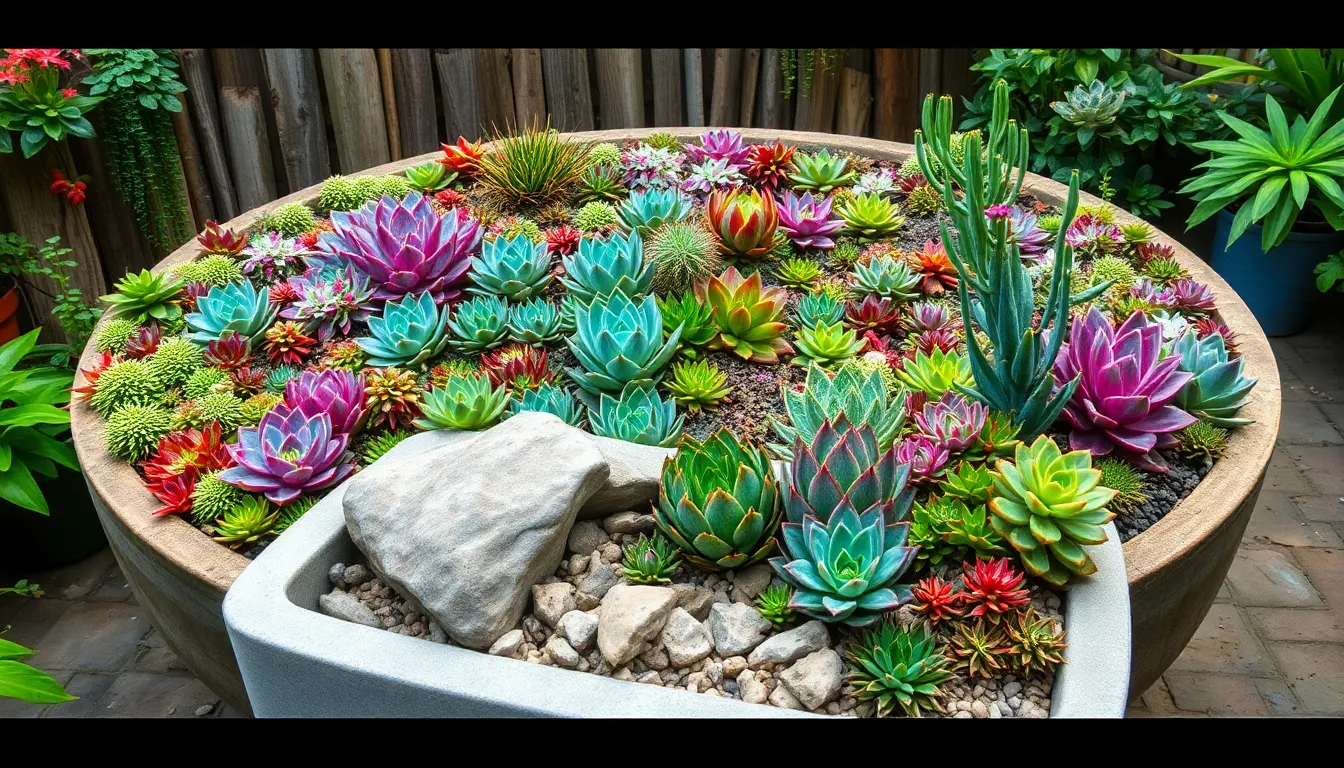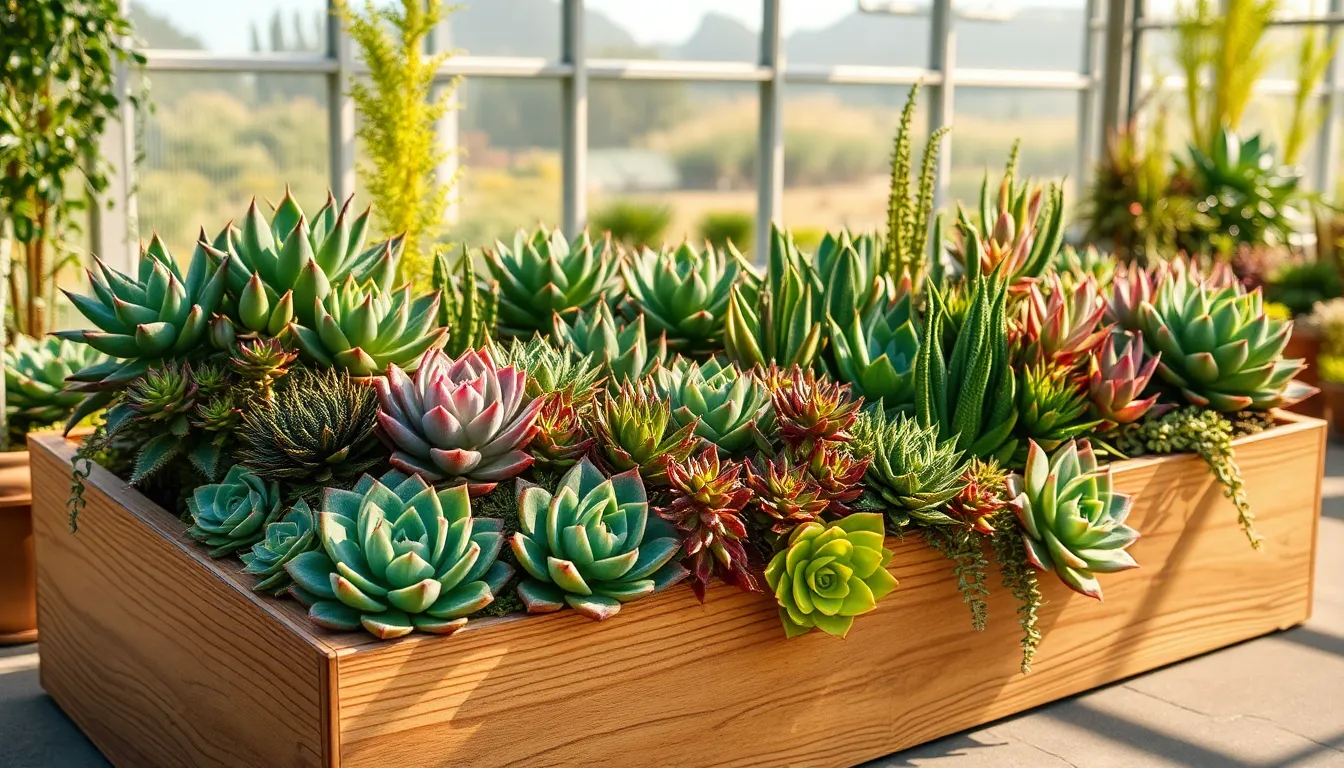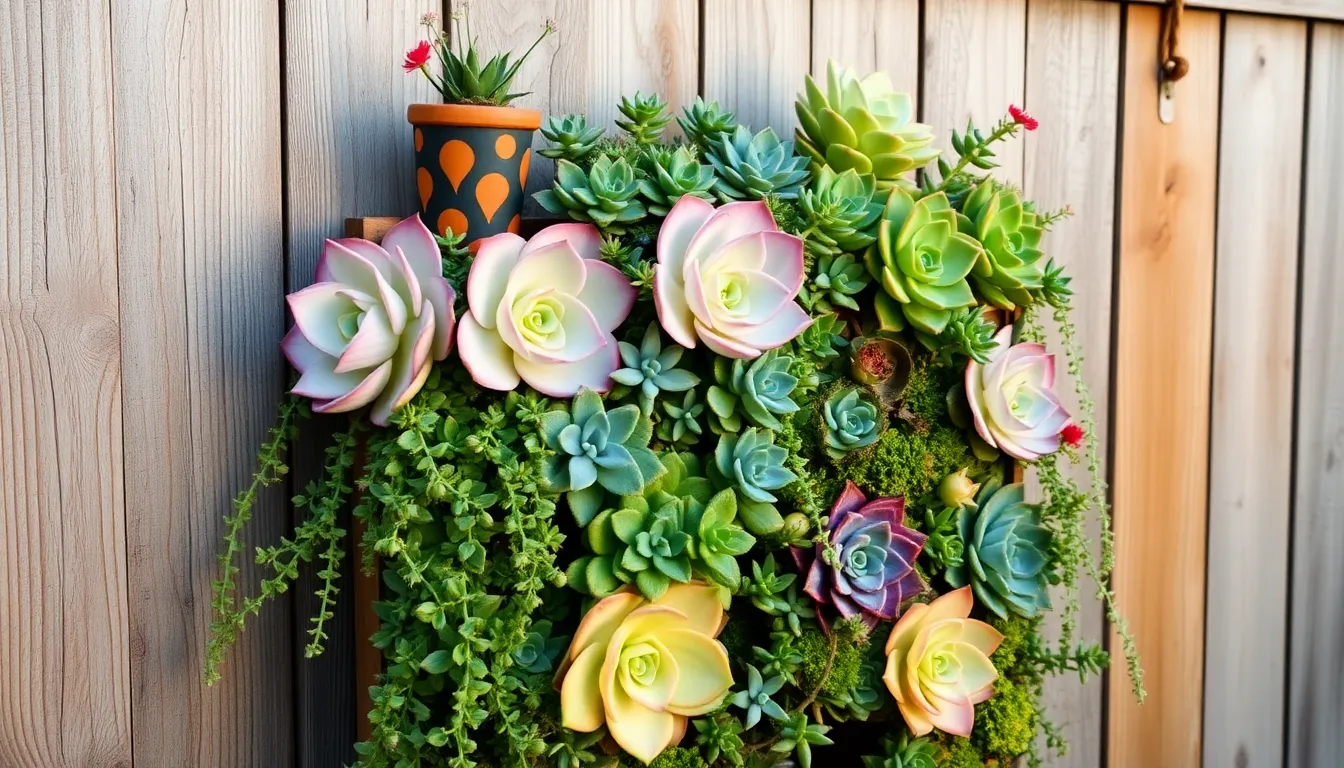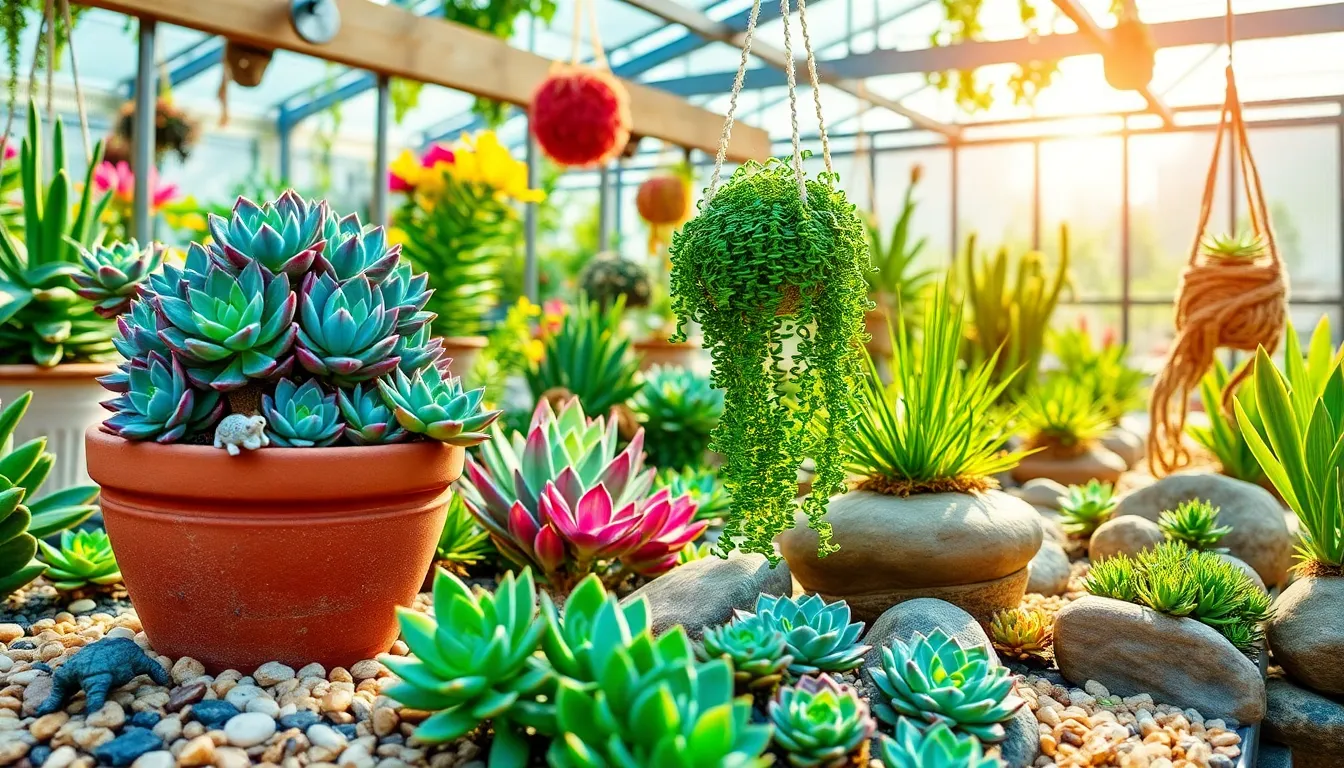Imagine strolling through a garden that feels like a living tapestry of vibrant textures and colors, each plant a masterpiece of natural artistry. Succulent gardens offer precisely this experience, transforming any space into a serene oasis replete with charm and resilience. Whether you’re just starting your gardening journey or you’ve cultivated countless plant varieties, succulents present an inspiring opportunity to unleash your creativity and design flair. These hardy plants are not only beautiful but also forgiving, thriving in a range of environments with minimal fuss.
Succulent gardens are more than just a trend; they embody a shift towards sustainable, low-maintenance gardening that harmonizes with the natural world. With their ability to store water, succulents are perfect for those looking to conserve resources while still crafting an eye-catching landscape. In this article, you’ll discover 15 inspiring succulent garden designs that cater to all tastes and spaces, from compact urban balconies to sprawling backyard retreats. Each design is a testament to the versatility and beauty of succulents, offering practical tips and inspiring ideas to help you create your own verdant haven.
You’ll learn how to mix and match different succulent varieties to achieve stunning visual effects and explore innovative ways to incorporate hardscaping elements. From vertical gardens to intricate container arrangements, we’ll guide you through each design with actionable advice and inspirational insights. By the end of this exploration, you’ll not only be equipped with fresh ideas but also empowered to transform your garden into a captivating celebration of nature’s resilience and artistry. Embrace the world of succulents and watch your garden flourish with life and color.
Understanding Succulent Garden Basics
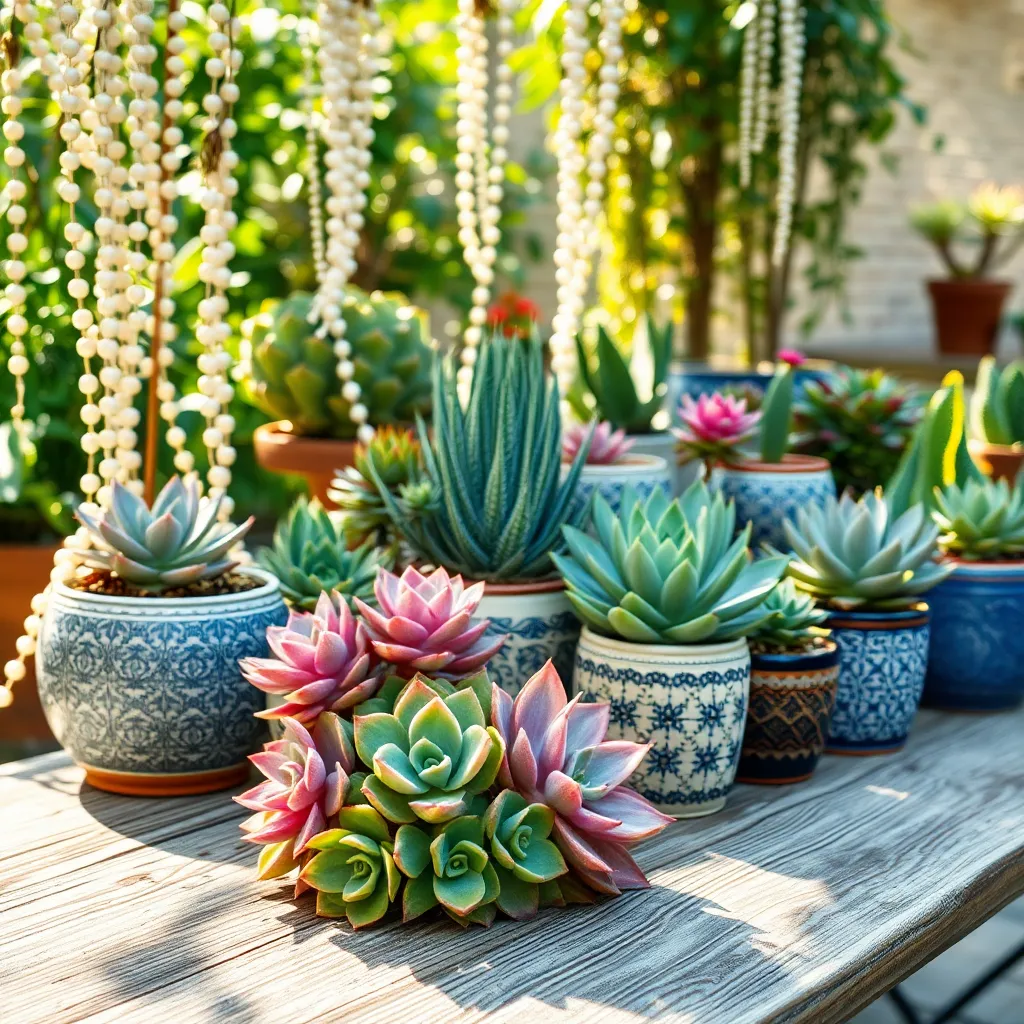
Creating a succulent garden involves understanding the unique needs of these resilient plants. Succulents thrive in well-draining soil, so it’s essential to use a cactus or succulent-specific mix to prevent root rot.
Watering succulents requires a delicate balance; they need deep watering but infrequently. It’s recommended to let the soil dry out completely between waterings, which usually means watering every two to three weeks depending on your climate.
Light is crucial for succulents, as most varieties prefer bright, indirect sunlight. However, some species can tolerate full sun, so it’s helpful to observe and adjust their placement based on their growth and color changes.
For more advanced gardeners, consider propagating succulents to expand your garden. Propagate by leaf or stem cuttings, allowing the cut ends to callous over before placing them in soil to root.
Choosing Diverse Succulent Varieties
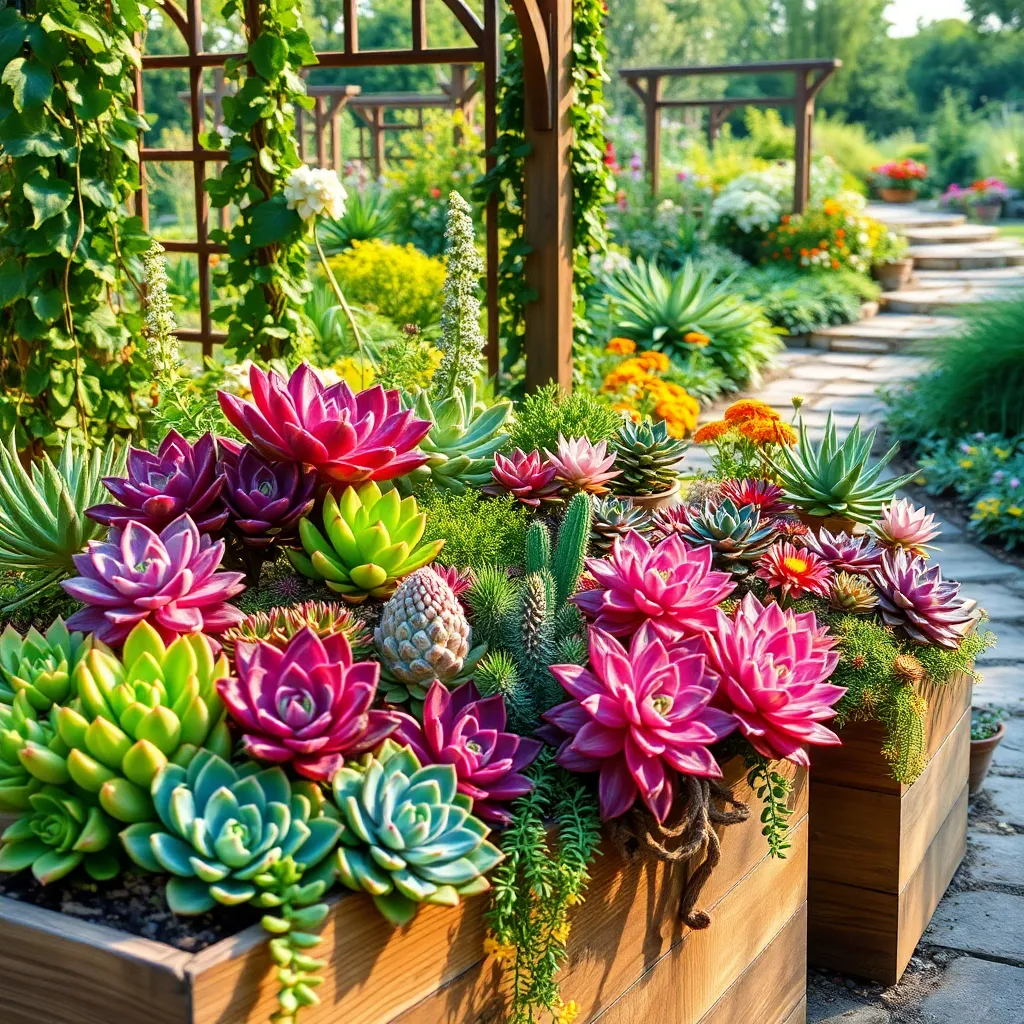
To create a visually stunning and thriving succulent garden, selecting a variety of succulent species is essential. Consider incorporating a mix of colors, shapes, and sizes to add depth and interest to your design.
Start with some beginner-friendly choices like Jade Plant (Crassula ovata) and Hens and Chicks (Sempervivum tectorum). These species are hardy and can tolerate a range of conditions, making them ideal for those new to succulent gardening.
For gardeners with more experience, try experimenting with succulents like String of Pearls (Senecio rowleyanus) or Flapjack (Kalanchoe thyrsiflora). These plants offer unique textures and forms that can elevate the aesthetic of any garden.
Regardless of your experience level, ensure your succulents are planted in well-draining soil to prevent root rot. A cactus mix or a blend of potting soil with sand and perlite is recommended for optimal drainage.
Watering is another critical aspect: succulents prefer a ‘soak and dry’ method, meaning you should allow the soil to dry completely between waterings. Typically, this means watering every two weeks, but this can vary based on the climate and pot size.
Light is also crucial: most succulents thrive in bright, indirect sunlight. However, be cautious of intense midday sun, which can scorch the leaves, especially in hotter climates.
For advanced gardeners, consider propagating your succulents to expand your collection. Many succulents, like Echeveria and Aeonium, can be propagated from leaves or offsets, providing a rewarding way to grow new plants.
Designing with Colorful Succulents
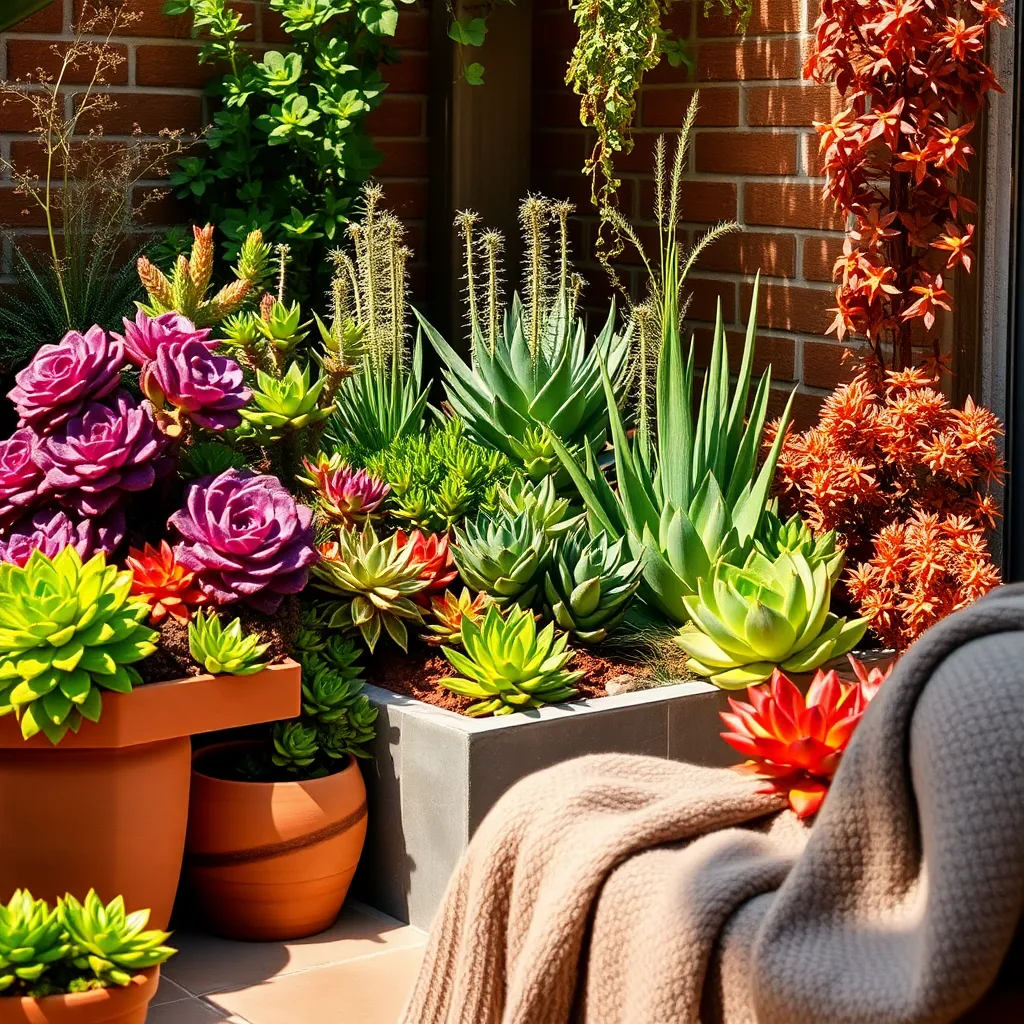
Colorful succulents can transform any garden space into a vibrant oasis. To start, choose a variety of succulents with contrasting hues like the deep purple of Echeveria ‘Black Prince’ and the bright green of Sedum ‘Angelina’.
Placing these succulents in groups can enhance their visual impact. Consider planting smaller varieties at the front and taller ones at the back to create a sense of depth and layers in your garden design.
Succulents thrive in well-draining soil, so it’s crucial to use a cactus mix or a blend of sand, perlite, and potting soil. Avoid overwatering by allowing the soil to dry out completely between waterings, especially during cooler months when succulents require less moisture.
For advanced gardeners, experimenting with color combinations can create stunning visual effects. Try pairing succulents with complementary colors, like the orange hues of Graptopetalum paraguayense with the blue tones of Senecio serpens.
Creating Stunning Vertical Gardens
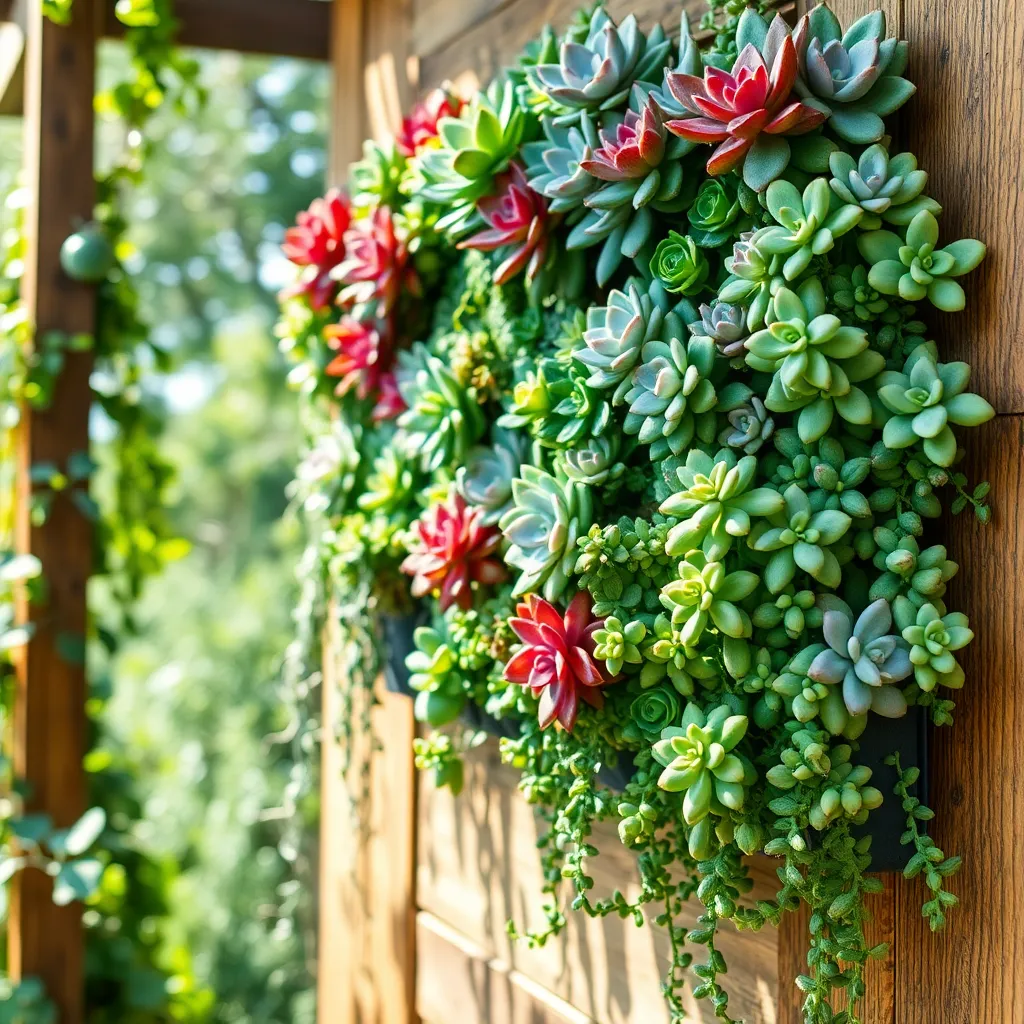
Vertical gardens offer a unique way to maximize space while adding a striking feature to your garden. To start, choose a sturdy frame or wall-mounted planter that can support the weight of your plants and soil.
When selecting succulents for your vertical garden, consider varieties like sedums, echeverias, and crassulas, which are known for their resilience. These plants thrive in well-draining soil, so use a cactus or succulent mix to ensure proper drainage and prevent root rot.
Watering is crucial for the health of your vertical succulent garden. Generally, a deep watering once every two weeks is sufficient, but adjust based on your local climate and the specific needs of your plants.
For those looking to add a creative touch, incorporate a mix of colors and textures to create visual interest. Grouping succulents with contrasting colors and forms can lead to stunning results that will draw attention and admiration.
Incorporating Succulents in Rock Gardens
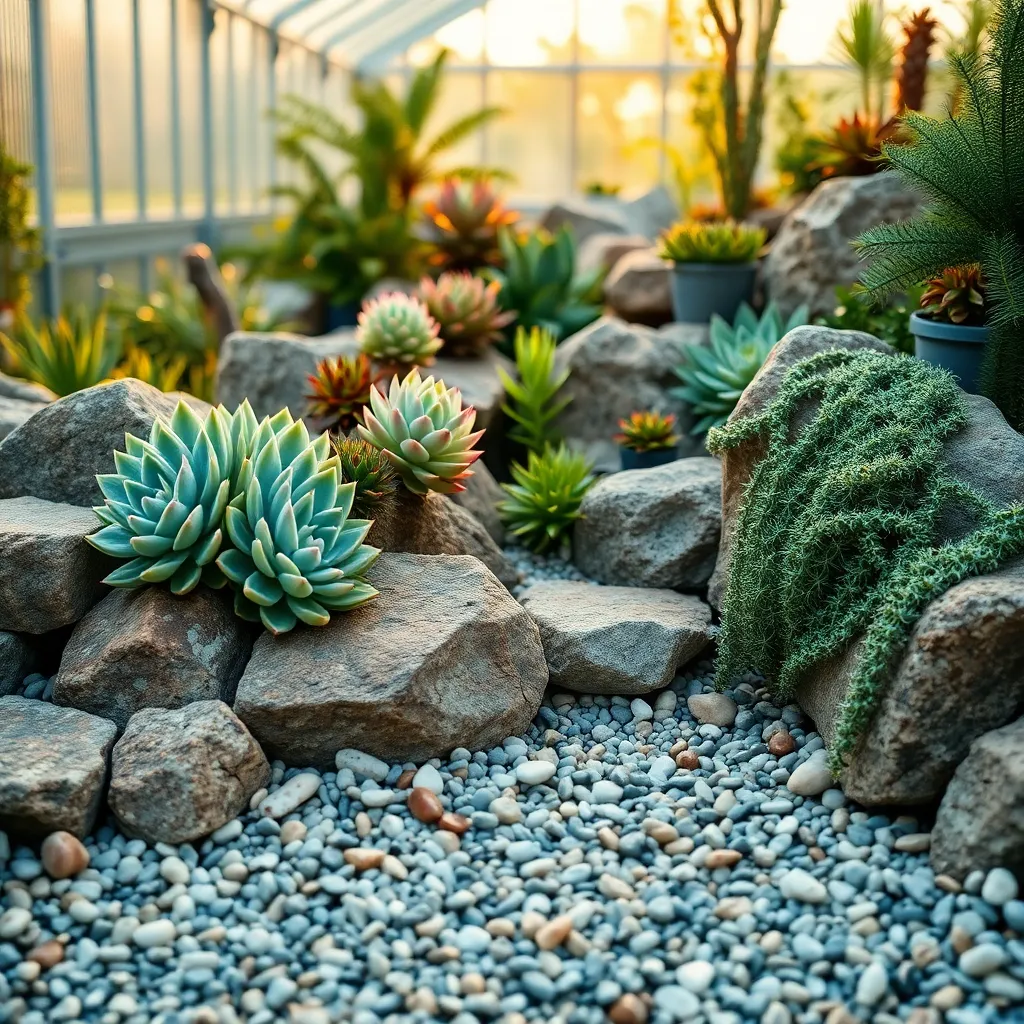
Incorporating succulents into rock gardens can create a stunning visual effect while offering a low-maintenance gardening option. Begin by selecting well-draining soil, such as a mix of cactus soil and sand, to ensure your succulents thrive.
Choose a variety of succulents that offer different textures and colors for a visually appealing display. Popular choices include Echeveria, Sedum, and Sempervivum, all of which adapt well to rocky environments.
Arrange your succulents with larger varieties as focal points and smaller ones to fill gaps, creating a natural-looking arrangement. To enhance drainage, consider slightly elevating the rock garden or using a slope.
Watering succulents in rock gardens requires a balanced approach. Water deeply but infrequently, allowing the soil to dry completely between waterings to prevent root rot.
Enhancing Patios with Succulent Pots
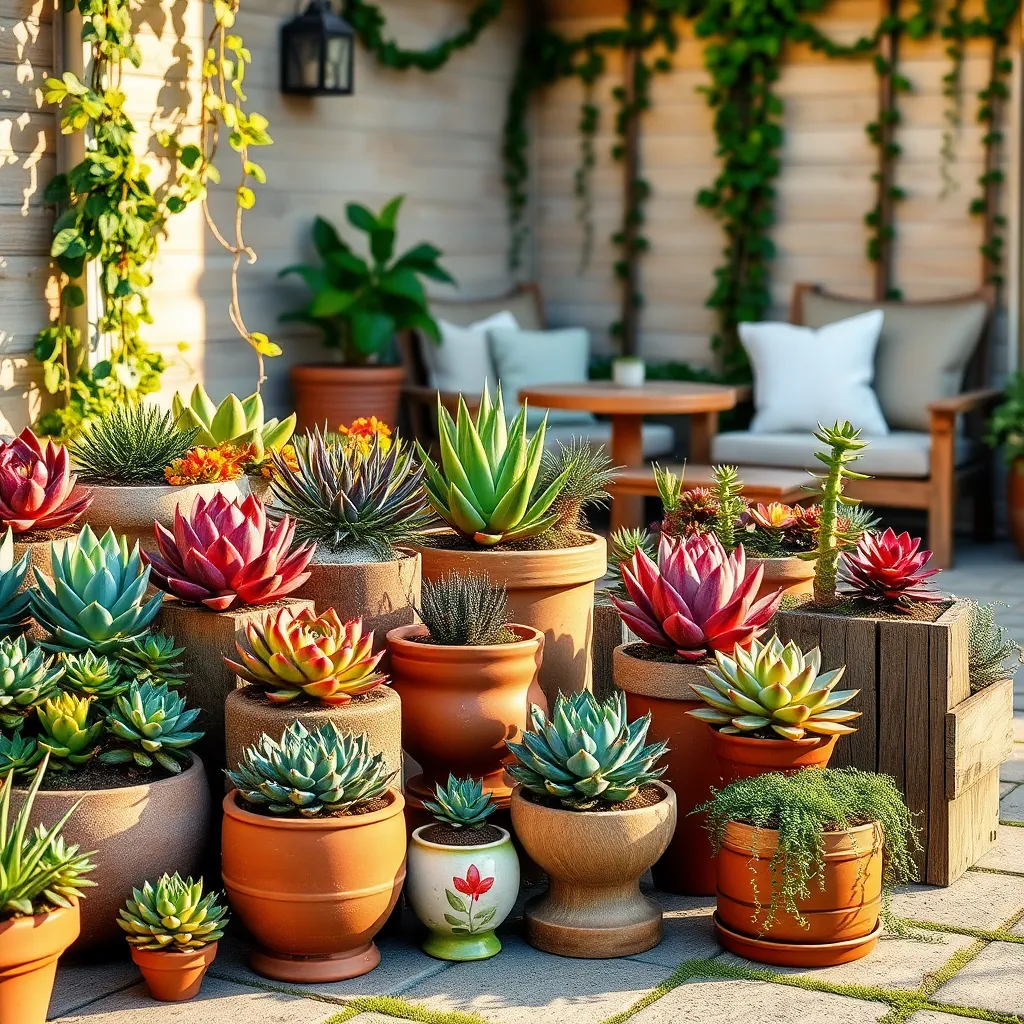
Enhancing patios with succulent pots is a fantastic way to add vibrant greenery without overwhelming your space. Start by selecting pots with excellent drainage to prevent root rot, a common issue with succulents.
Consider using a cactus or succulent potting mix as it provides the fast-draining conditions these plants thrive on. If you’re a beginner, start with hardy varieties like jade plants or echeveria, which are forgiving and require minimal care.
For more advanced gardeners, try creating a themed succulent arrangement by combining different shapes and textures. Use a mix of tall, spiky plants like aloe with trailing varieties such as string of pearls for a dynamic look.
Ensure your succulents receive plenty of sunlight, ideally placing them in a spot that gets around six hours of direct light each day. In hotter climates, consider a location that offers afternoon shade to prevent sunburn on your plants.
Watering succulents is another crucial aspect; allow the soil to dry out completely between waterings. During the growing season, this might mean watering once a week, but in winter, you can reduce this frequency significantly.
Crafting Indoor Succulent Displays
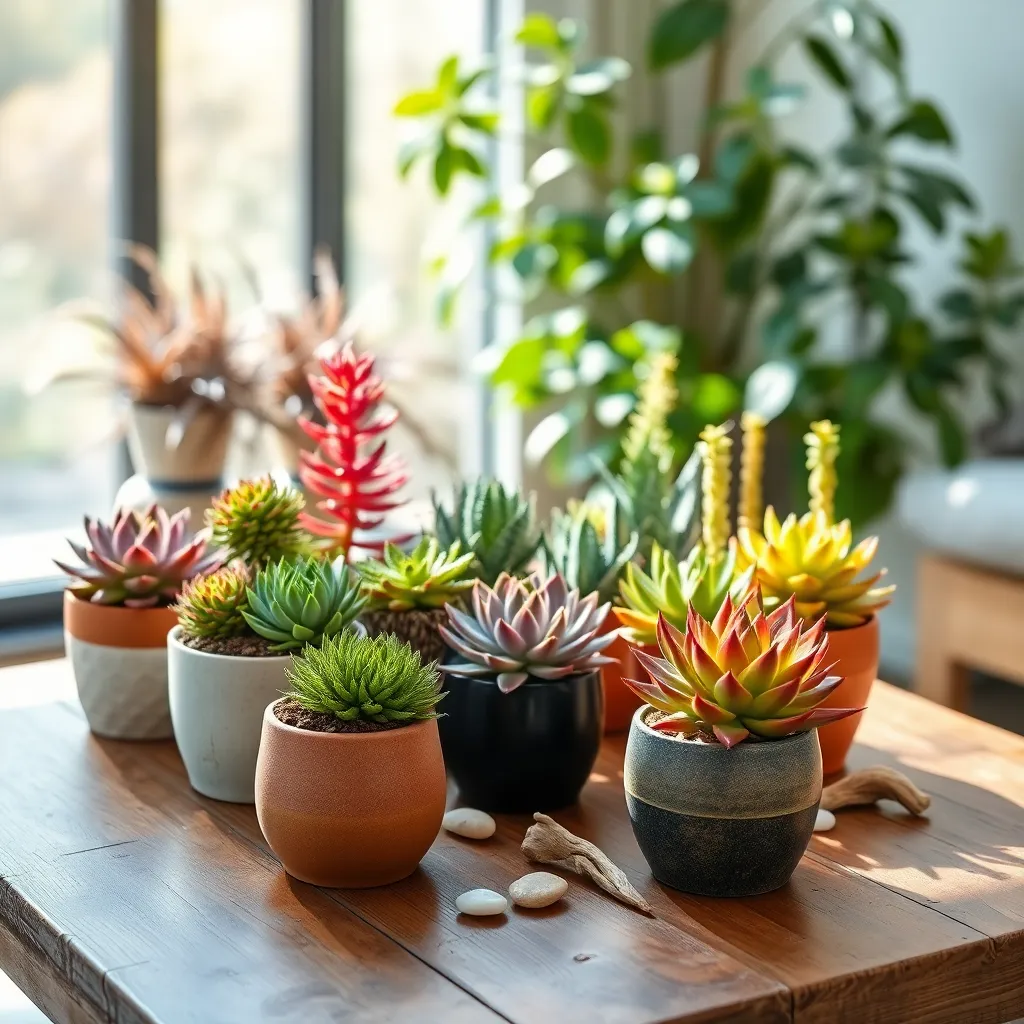
Creating indoor succulent displays is a wonderful way to bring nature’s charm into your home. To start, choose a shallow container with drainage holes to prevent water from pooling, which can lead to root rot.
Use a cactus or succulent potting mix, which is specially formulated to provide the right drainage and nutrients. This type of soil prevents waterlogging and supports the unique needs of succulents.
Arrange your succulents by considering their growth patterns and colors for a visually appealing display. Place taller succulents like aloe or echeveria at the back, and use trailing varieties such as string of pearls to cascade over the edges.
Although succulents are drought-tolerant, they still require some care. Water them sparingly; allow the soil to dry out completely between waterings, typically once every two to three weeks depending on your indoor climate.
Position your display in a spot where it can receive ample light, as most succulents thrive in bright, indirect sunlight. If natural light is limited, consider supplementing with a grow light to keep your succulents healthy and vibrant.
For advanced care, periodically rotate your display to ensure even growth and prevent your succulents from leaning towards the light. Additionally, remove any dead leaves to maintain the plant’s health and aesthetics.
Building Striking Succulent Terrariums
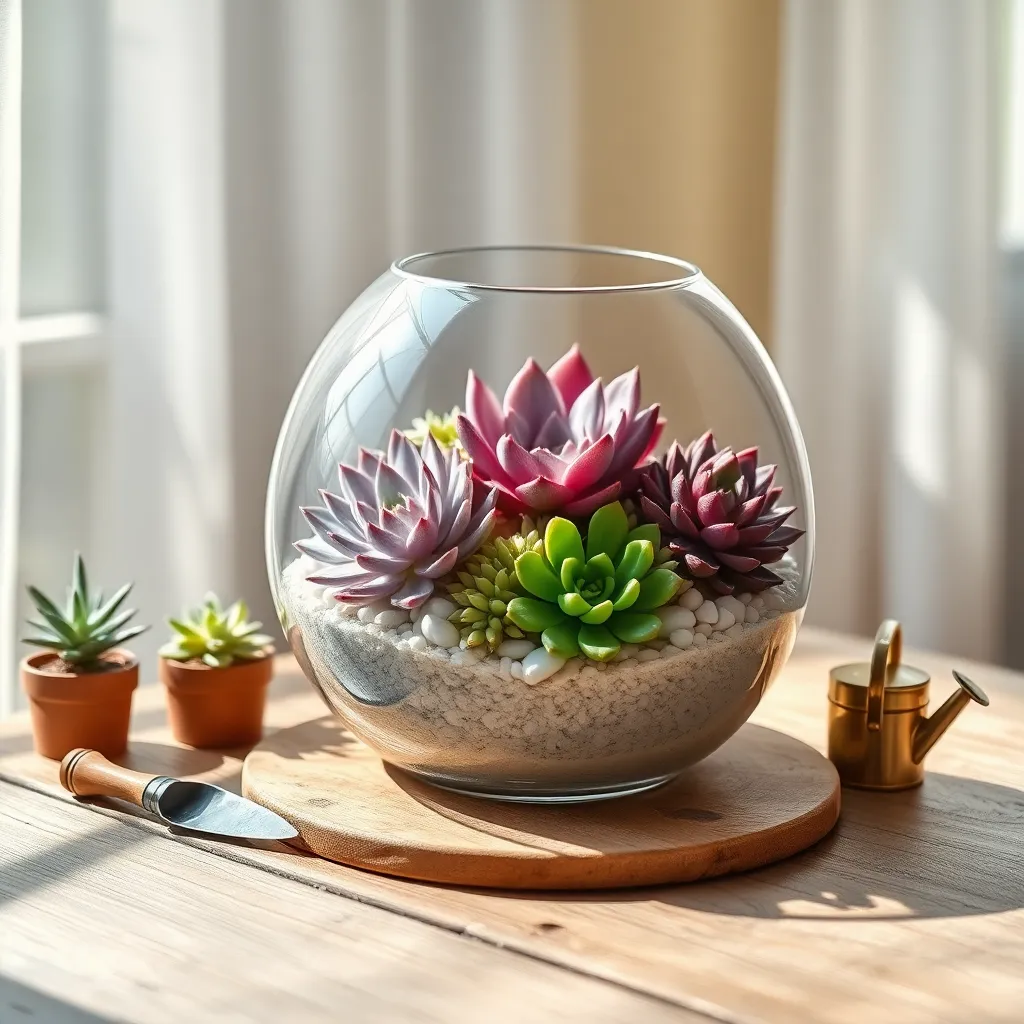
Creating a succulent terrarium is an artful way to bring a mini-garden into your home. To start, choose a clear glass container, as the transparency showcases the layering of soil, rocks, and plants beautifully.
Begin by laying a base of small pebbles or coarse sand to ensure proper drainage, which is crucial for succulents. Over this, add a layer of activated charcoal to keep the terrarium fresh and prevent odors.
A succulent potting mix should be added next, filling about a third of the container. This mix is specifically designed to be well-draining, which is essential for the health of your succulents.
When selecting succulents, opt for a variety of textures and shades to create visual interest. Popular choices include Echeveria, Haworthia, and Crassula, all of which thrive in indirect sunlight.
After planting, water sparingly, allowing the soil to dry out completely between waterings. Too much moisture can lead to root rot, so use a spray bottle for precise control.
For a finishing touch, consider adding decorative elements like moss or small figurines. These additions can personalize your terrarium, making it a unique centerpiece in your home.
Integrating Succulents with Hardscapes
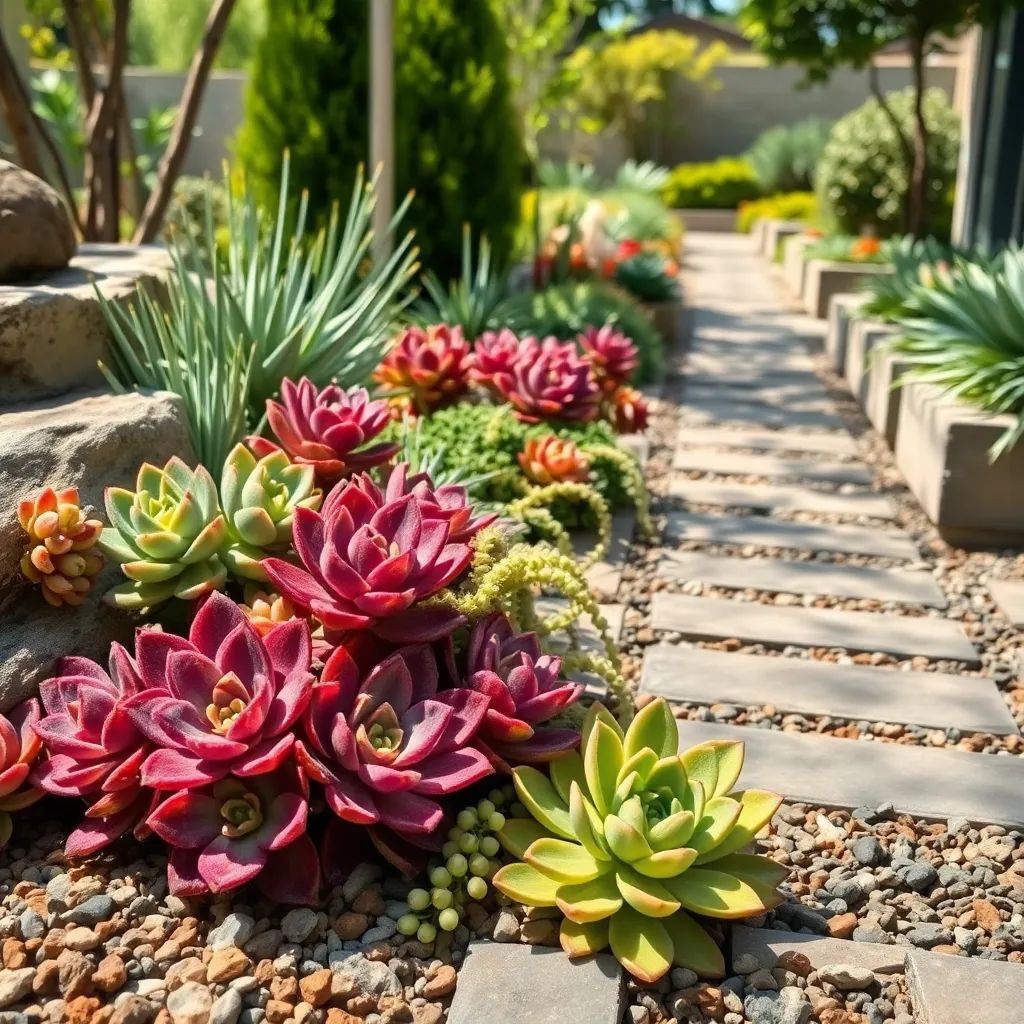
Integrating succulents with hardscapes can create a visually stunning and low-maintenance garden feature. Begin by assessing your garden’s current layout and identifying areas where hardscapes like pathways, patios, or rock gardens can be enhanced with succulents.
When selecting succulents for your hardscape, consider varieties that thrive in your climate and can tolerate the conditions created by the hardscapes, such as increased heat from stones. Popular choices include sedums, echeverias, and sempervivums, which are known for their resilience and low water needs.
For planting, use a well-draining soil mix, ideally with a blend of sand, perlite, and potting soil to prevent root rot. Position your succulents in crevices between rocks or along the edges of pathways, ensuring they receive adequate sunlight but are protected from harsh midday rays.
Watering is crucial; succulents integrated with hardscapes require less frequent watering due to reduced soil volume and increased drainage. Aim to water deeply but infrequently, allowing the soil to dry out completely between watering sessions to mimic their natural arid environments.
Advanced gardeners can experiment by incorporating different succulent varieties to craft intricate patterns or color schemes within their hardscapes. This not only adds depth and interest but also allows for a unique expression of personal style in the garden.
Utilizing Succulents for Ground Cover
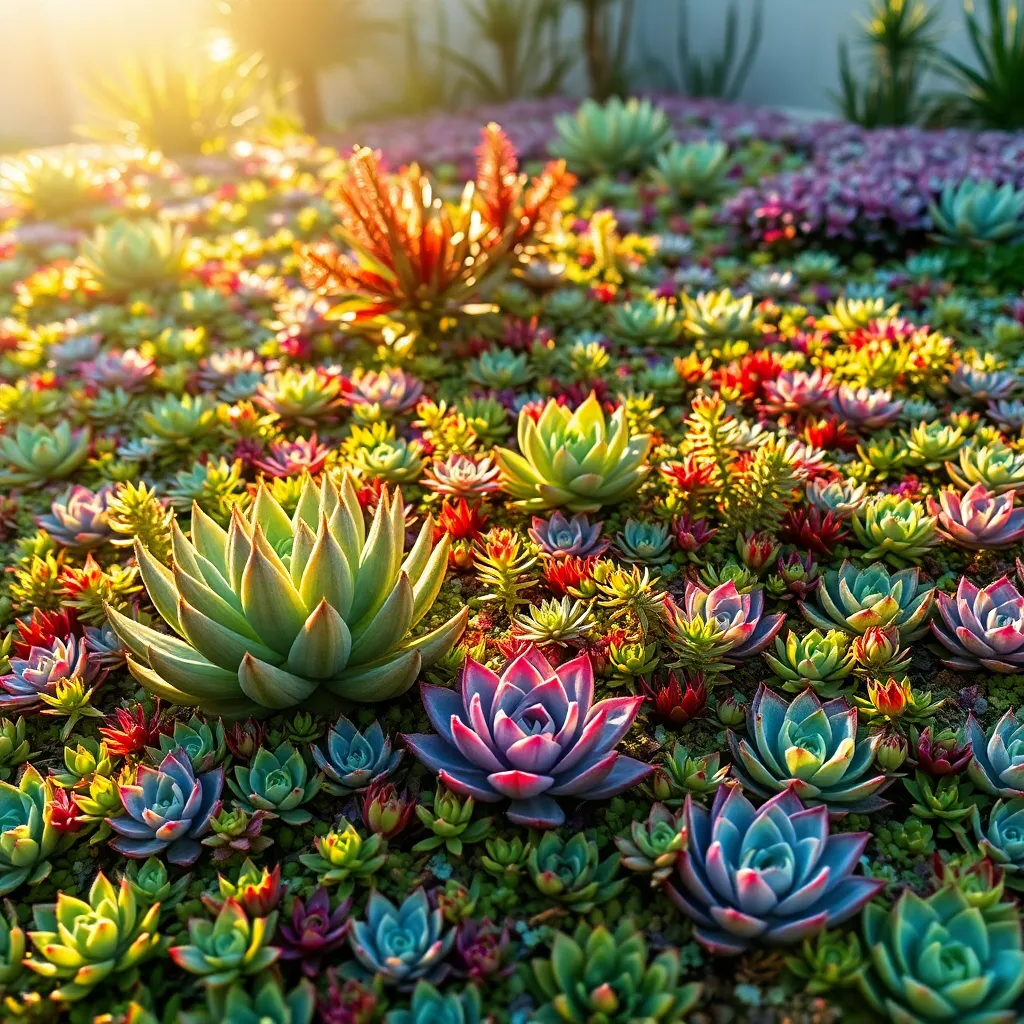
Succulents make excellent ground cover choices due to their low maintenance and drought-resistant nature. They thrive in well-draining soil, so consider using a sandy or gritty mix to prevent waterlogging.
Before planting succulents as ground cover, prepare the area by clearing debris and weeds to ensure they have room to spread. It’s important to space them adequately—about 6 to 12 inches apart—to allow for their growth and to create a lush carpet effect.
When watering, aim for a deep soak once the soil has completely dried out, as succulents prefer drier conditions. Be cautious of overwatering, especially in humid climates, as excess moisture can lead to root rot.
For beginners, consider starting with varieties like Sedum and Sempervivum, which are both hardy and adaptable. Advanced gardeners might experiment with interplanting multiple succulent types to create a mosaic of textures and colors.
Designing Water-Wise Succulent Landscapes
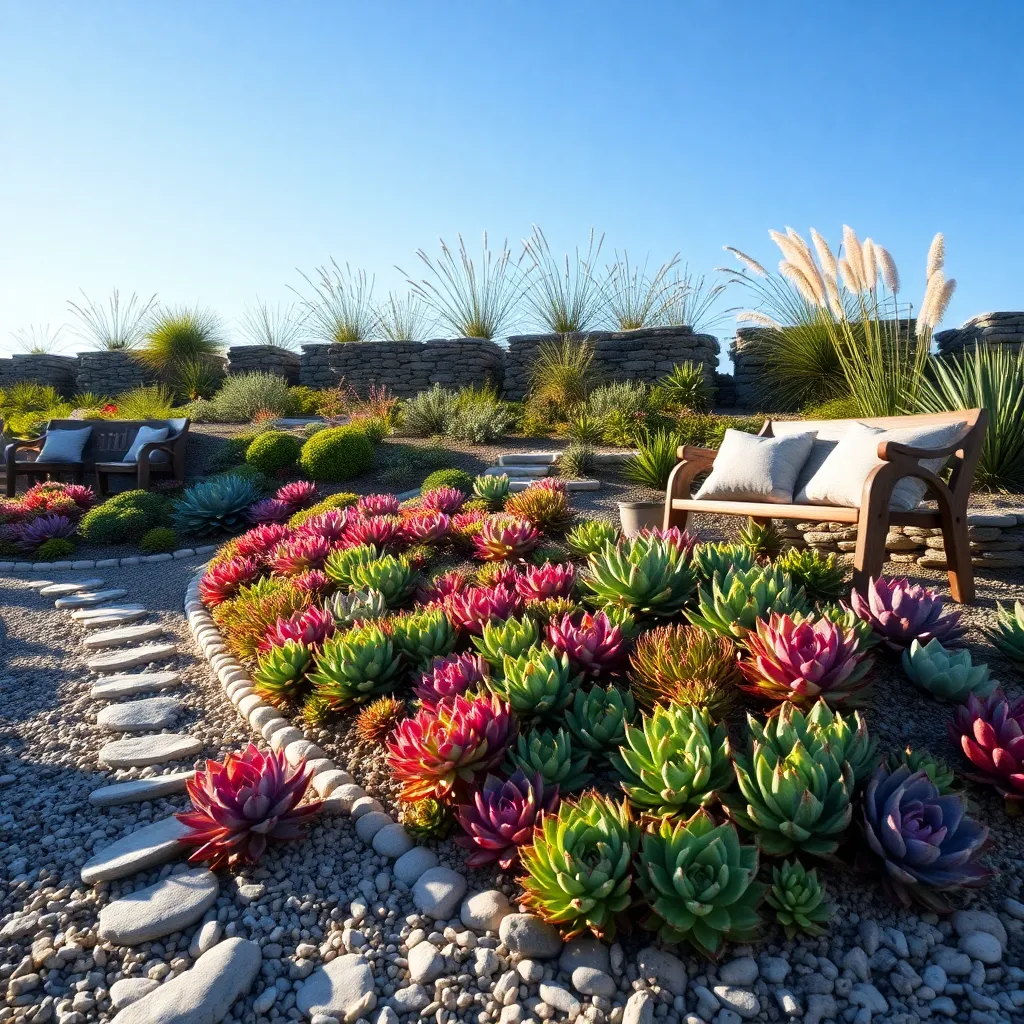
Incorporating water-wise succulent landscapes into your garden can significantly reduce water usage while adding striking visual appeal. Opt for a mix of drought-tolerant succulents like Agave, Aeonium, and Sempervivum to create an eye-catching display.
Start by selecting a well-draining soil mix, such as one composed of sand, perlite, and a small amount of organic matter. This ensures your succulents receive adequate drainage, preventing root rot and promoting healthy growth.
When planting, space succulents approximately 6 to 12 inches apart to allow for growth and air circulation. This spacing reduces the risk of fungal diseases and provides each plant with enough room to thrive.
Water succulents deeply but infrequently, allowing the soil to dry out completely between waterings. Typically, watering once every two weeks is sufficient, though adjustments may be necessary depending on climate and season.
Advanced gardeners might consider adding a layer of mulch, such as gravel or crushed stone, around the plants. This not only enhances the aesthetic but also helps retain soil moisture and suppresses weeds.
Combining Succulents with Other Plants
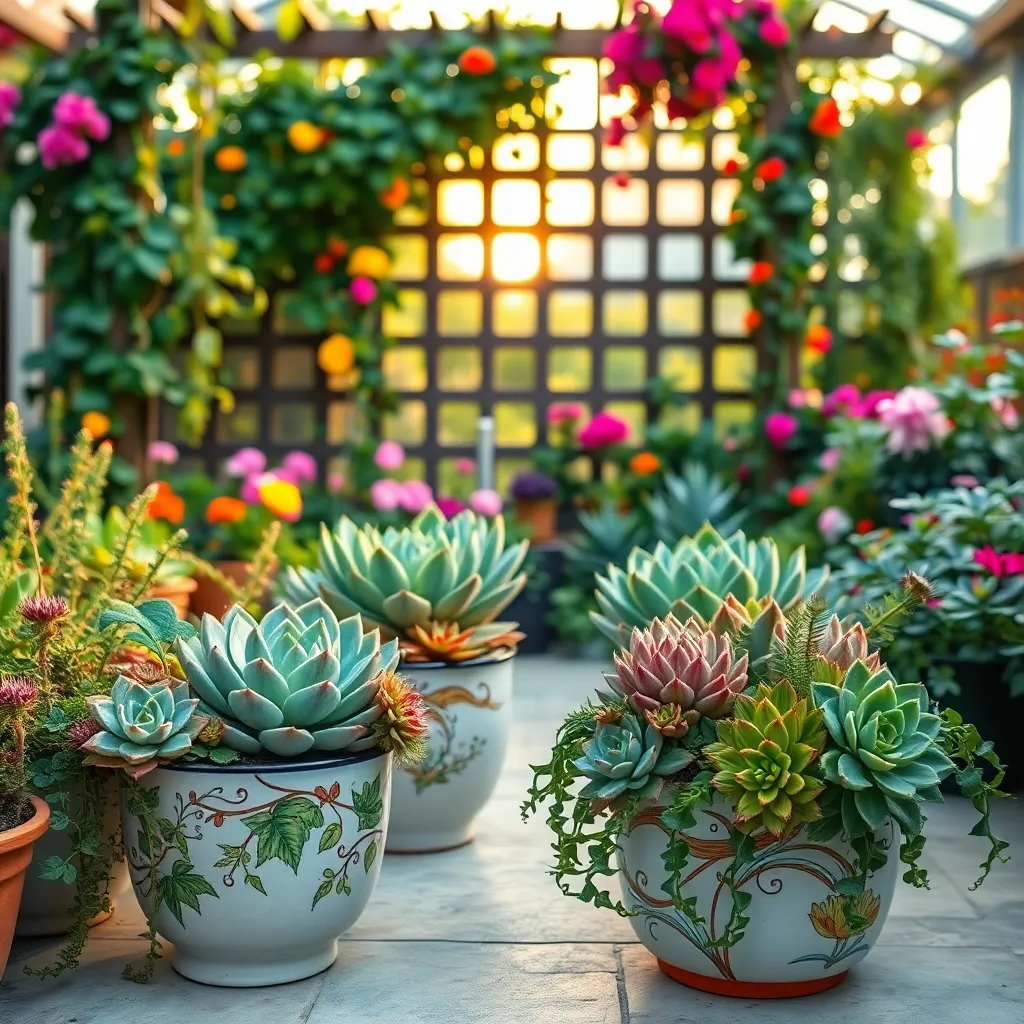
Pairing succulents with other plants can create a vibrant and diverse garden landscape. To successfully combine these plants, it’s crucial to select companions with similar water needs, such as drought-tolerant perennials or ornamental grasses.
Start by choosing a well-draining soil mix that suits both succulents and their companions. A combination of cactus soil and regular potting mix in a 1:1 ratio often works well, ensuring that both plant types receive adequate drainage without becoming waterlogged.
Consider the light requirements of all chosen plants to ensure they thrive together. Most succulents prefer bright, indirect sunlight, so select companion plants that can tolerate these conditions, like lavender or rosemary.
For advanced gardeners, experimenting with varied textures and heights can add depth to your succulent garden. Use taller plants like agave or yucca to provide structure, while trailing succulents such as string of pearls can spill over edges for a layered effect.
Maintaining Your Succulent Arrangements
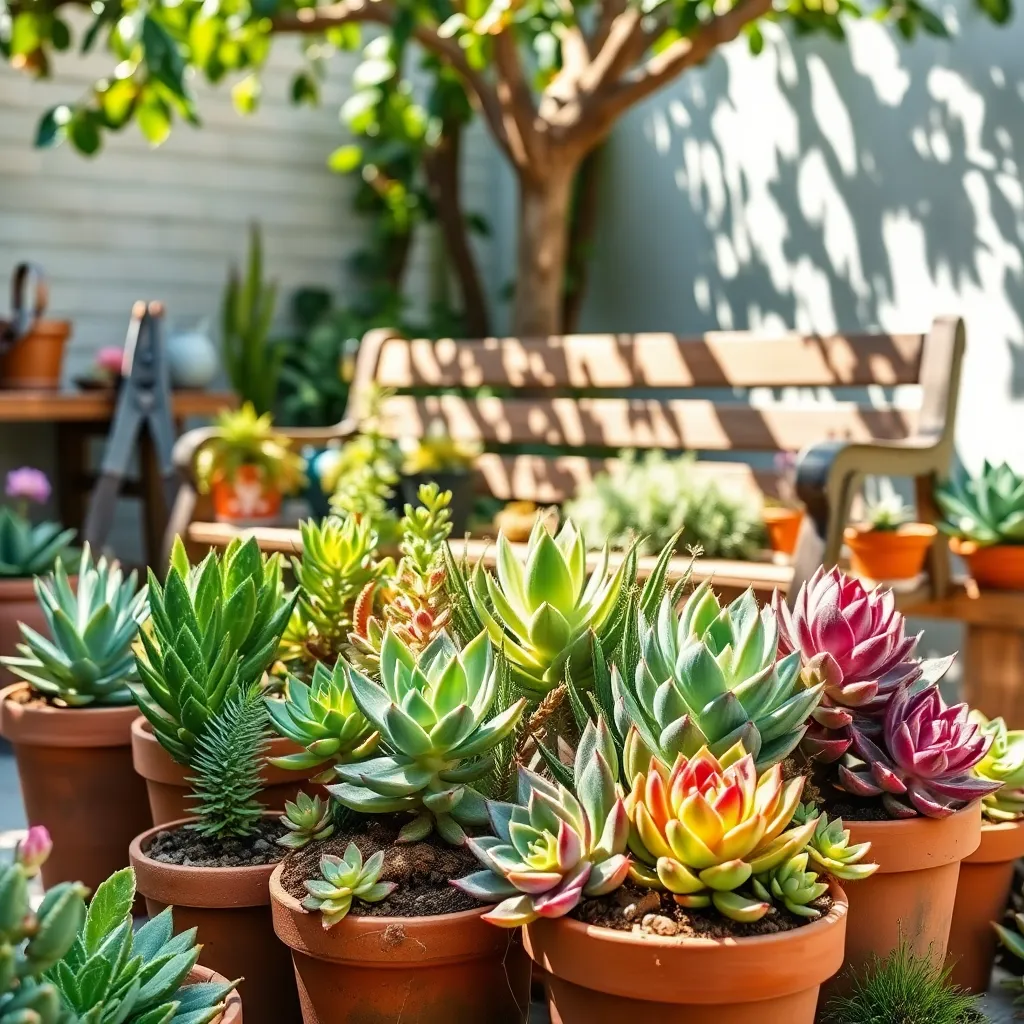
Succulent arrangements are a beautiful and low-maintenance option for your garden, but they still require some care to thrive. Ensuring proper drainage is crucial, so use a potting mix designed for succulents or create your own with a blend of sand, perlite, and potting soil.
Watering succulents can be tricky, as they need less water than most plants. Allow the soil to dry out completely between waterings, and then water thoroughly until you see water draining from the bottom of the pot.
Light is another critical factor for succulent health. Most succulents prefer bright, indirect sunlight, though some can tolerate direct sun. Rotate your arrangements regularly to ensure even light exposure and prevent them from leaning toward the light source.
Pruning is an essential part of maintaining succulent arrangements and encourages healthy growth. Remove any dead or dying leaves with clean, sharp scissors, and consider trimming leggy growth to promote a more compact and attractive shape.
For those interested in propagation, succulents offer exciting opportunities. Many varieties can be propagated from leaves or offsets, which means you can expand your collection at no cost. Be patient, as propagation can take several weeks, but the results are well worth the wait.
Troubleshooting Common Succulent Issues
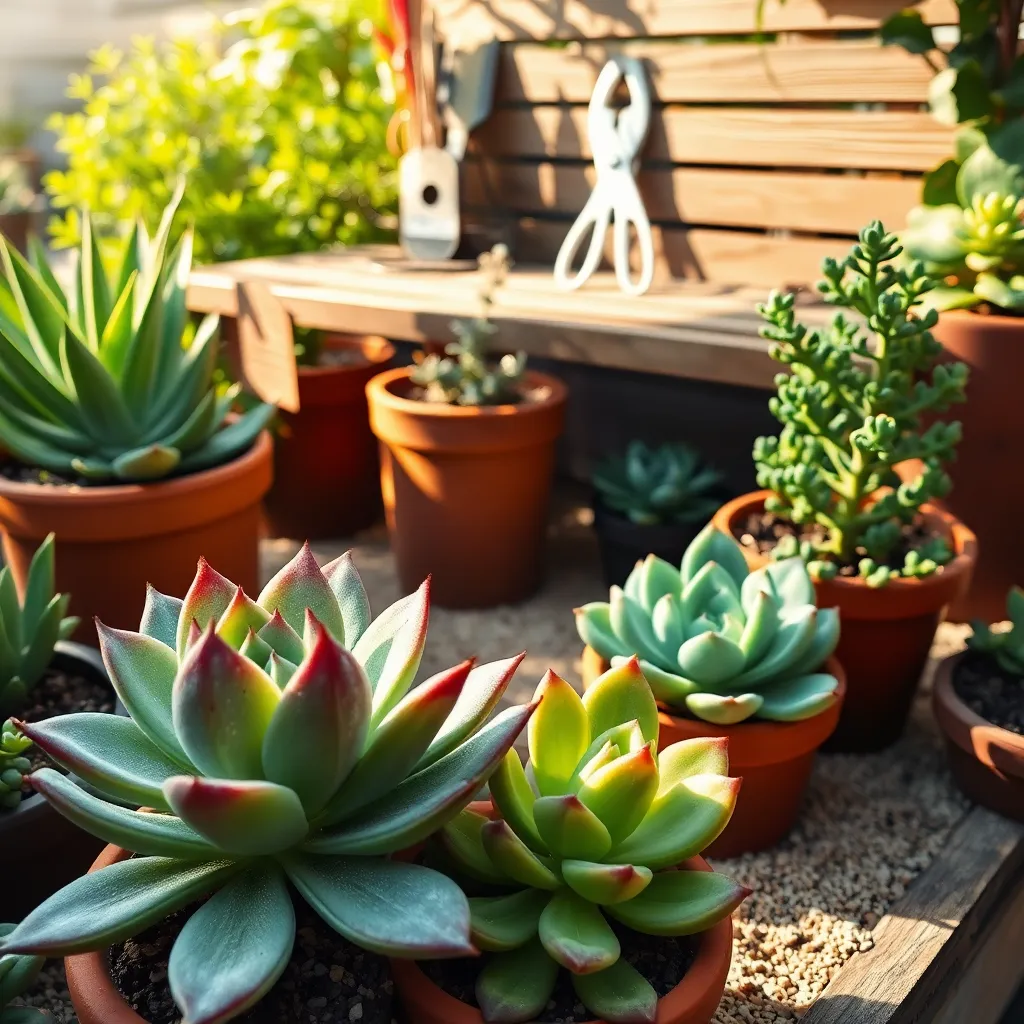
Succulents are popular for their low maintenance, but they can still encounter issues like overwatering. To prevent root rot, ensure your succulents are planted in a well-draining soil mix, such as one designed for cacti, and use pots with drainage holes.
Another common problem is leaf drop caused by insufficient light. Move your succulents to a brighter spot, ideally a south-facing window, or consider supplementing with a grow light to provide adequate illumination.
Pests can also be a nuisance, with mealybugs being particularly troublesome. To combat these, gently wipe the affected areas with a cotton swab dipped in alcohol or use a neem oil spray as a natural pesticide.
For those experiencing leggy growth, the issue often stems from inadequate light exposure. Prune the elongated sections and replant them in a brighter location to encourage more compact growth.
Inspiring Succulent Garden Transformations
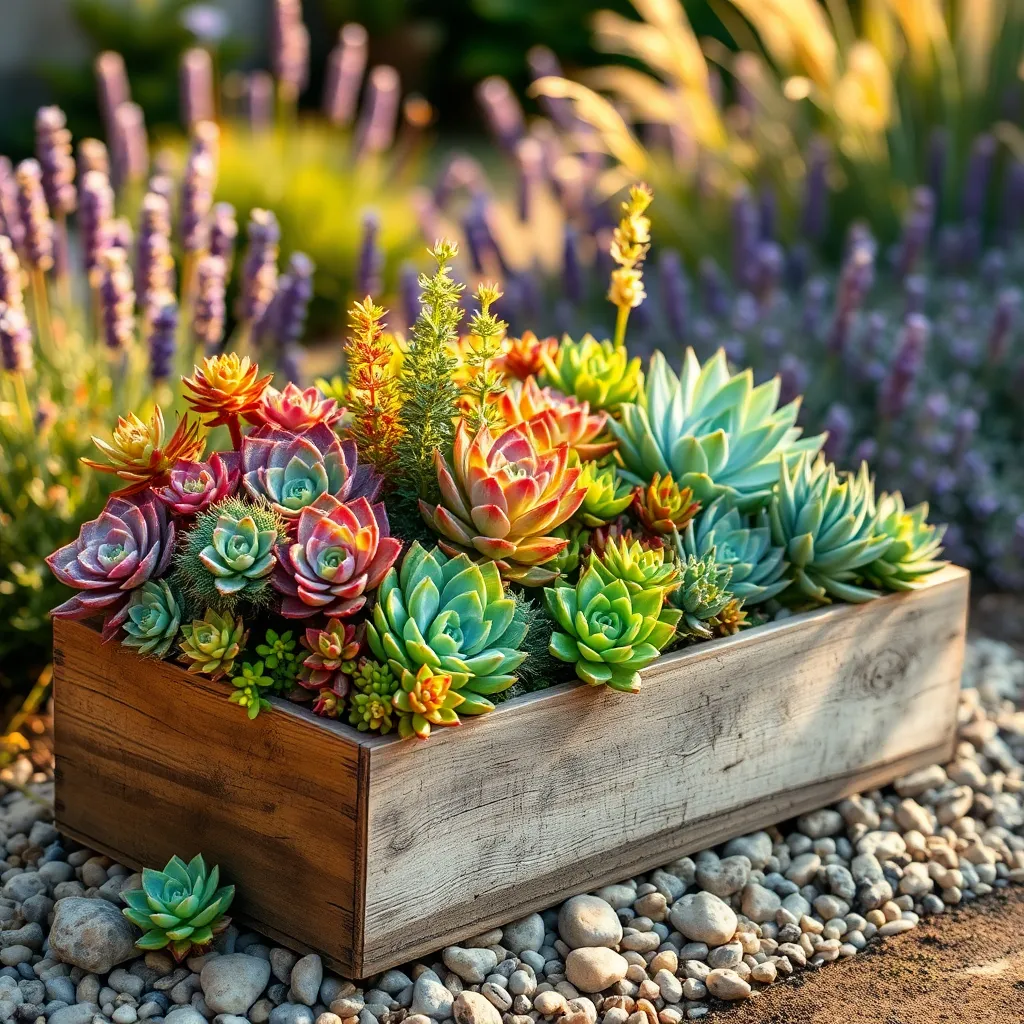
Transforming your garden into a succulent oasis can be both rewarding and visually stunning. Start by selecting a variety of succulents with diverse shapes and colors to create depth and interest.
Consider planting succulents in containers if you’re working with limited space. Use a well-draining soil mix, such as one with equal parts sand, perlite, and potting soil, to ensure your succulents thrive.
Regularly evaluate the light conditions in your garden to align with the needs of your succulents. Most succulents require at least six hours of bright, indirect sunlight each day to maintain their vibrant colors.
Watering succulents correctly is crucial to prevent root rot and other issues. Allow the soil to dry out completely between waterings, and use the “soak and dry” method to keep roots healthy.
For a creative touch, try incorporating unexpected elements like driftwood or stones into your succulent arrangement. These natural materials can enhance the visual appeal and provide a unique focal point within your garden.
Advanced gardeners might want to experiment with propagating succulents to expand their collection. Propagation can be done through leaf cuttings or offsets, offering an economical way to fill your garden with lush greenery.
Conclusion: Growing Success with These Plants
As we journeyed through the ’15 Inspiring Succulent Garden Designs’, we uncovered vibrant parallels between cultivating a thriving succulent garden and nurturing flourishing relationships. From embracing diversity and patience in growth to understanding the importance of space and boundaries, each design offered a unique insight into fostering connection and love. We explored the impact of resilience, adaptability, and the beauty of simplicity, alongside the necessity of nurturing roots and allowing time for growth. These concepts remind us that just like a well-tended garden, relationships require attention, care, and creativity.
Now, it’s time to put these insights into action. Take a moment today to reflect on one relationship in your life and identify which succulent-inspired principle could enhance it. Whether it’s offering more patience or creating space for growth, small steps can lead to profound change.
To keep these valuable insights within reach, bookmark this article. It’s a resource you’ll want to revisit as you continue to cultivate the relationships that matter most.
Remember, the seeds of today’s efforts can blossom into tomorrow’s success. Embrace these insights, save this guide, and watch as your relationships grow with resilience and beauty.

